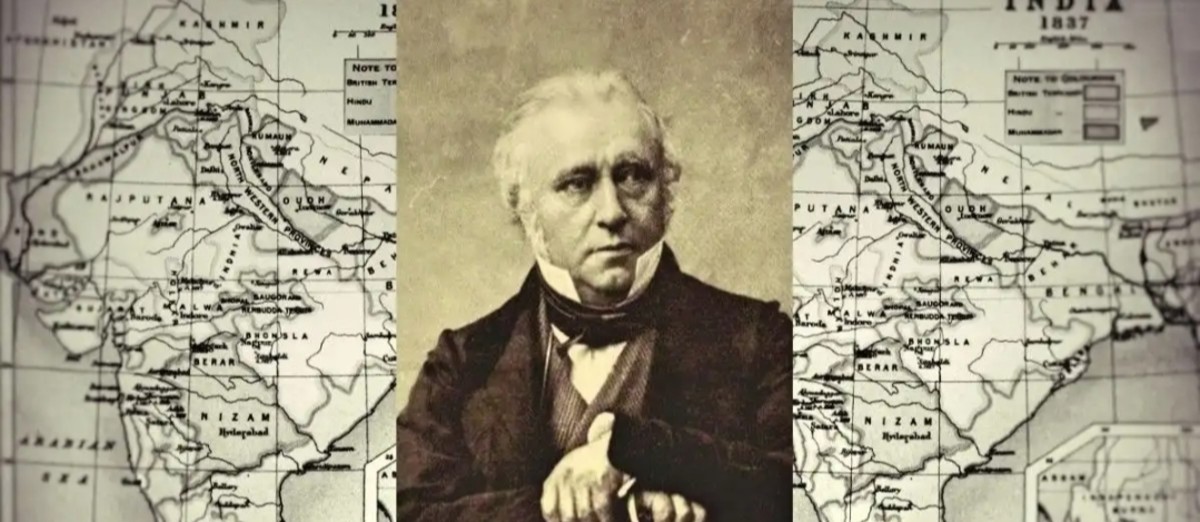Brownman

The Brown Sahib's Dogma
Who is the Brown Sahib and why does he so desperately seek to be accepted as a credible personification of an intelligent, erudite and civilized person, better if not at par with others? Why are his manners always so impeccable, his English so fluent and correct, his attire always seeking to find acceptance in the best Western standards of apparel, and his appetite for fois gras, sushi, bubblies and single malts so refined? Who is this comic sahib who tries so desperately to impersonate the affluent Westerner, and in the process reduces himself to a pitiable example of absurdity and ignominy in the hallowed echelons of sophistication?
He is not a peculiarity though where most people in the world today wish to ape the Western way of living. Be it clothes, food, movies or anything else, the influence of the Western world is omnipresent everywhere.
How has this evolved in the Indian subcontinent over the ages. The following is my way of looking at the process of evolution.
.

Brownman's Psyche
To understand the Brownman's psyche, we need to delve inside him a bit. Brownmen are normally confined to the Indian subcontinent comprising India, Pakistan, Bangladesh, Nepal, Bhutan and Sri Lanka, though these days with their wide diaspora they can be found literally anywhere in the world. You wouldn't be surprised to find a brownman selling "Chicken Tikkas" in Iceland, so wide is their diaspora! But then that's another story. Brown people like me have been subjugated by invading forces for well over a thousand years, initially by the Mughals descending down the hills of Afghanistan, and subsequently by the British Empire for more than 300 years. The colonial legacy has left us unsure of ourselves, and our heritage, culture, the way we dress or speak, our food habits, the way we behave have all been overshadowed by a culture and language foreign to our very existence. We strive to imitate a sahib and aspire to be like him in every sense, but strive as hard as we can simply cannot change our skin color or our basic nature. Our schools and higher educational institutions teach in English, and sometimes our authors write better English than native English speakers. Until a few years ago, we were awed by the white race to a large extent, not for any other reason but simply because of their skin color. We have cosmetic creams available in the market that promise to make the skin fairer, there are parlors that work towards enhancing skin glow, and there are plastic surgeons who promise to lift and rework the face to define Caucasian features
Why This Absurdity?
Why this absurdity though? Can't we simply be ourselves, wear clothes to our liking that are comfortable in the environment where we dwell, listen to music that is classically Indian, or speak in a language that is spoken widely in the subcontinent? Why do we need to imitate others and strive to gain acceptance through means that are not readily available at our disposal?
The accent is always wrong, the words chosen to speak or write are mostly out of place and the apparel or food never suits the mindset or body frame. The shoe or the three-piece suit with a bow tie was born out of necessity in England during Victorian times to block out as much cold as possible and cover the body in an apparel that keeps the chill out from contact. Adapting to that apparel in the dusty, hot and humid conditions as prevailing in the subcontinent is a rather awkward and foolish gesture to catch up with people from colder climates. Similarly, food that is rich in protein and animal fat is required for people dwelling in colder environments. Having the same type of food in a hot climate is rather harmful, and quite unnecessary for sustenance. Rather, depending on a largely vegetable-based diet will help the body get balanced with the environment and let it be at a comfortable level of temperature to maintain equilibrium.
The following are some examples of furniture that were used during the British Raj in Indian households. I remember a hat stand at the entrance to our inner house beneath the stairwell when we were young. The hat was not necessary in the subcontinent then, as it is now. The piece gradually fell into disrepair and over time termites took the better of it, but the irrelevance of the stand in our house is still a reminder to me to this day about us striving to imitate the Englishmen.

Can The Problem Be Seen From A Different Perspective?
The problem can be seen from a different perspective though. Every region in the Indian subcontinent has its own unique cultural identity and consequently language. For instance, people from the North do not look, eat, or talk similar to people in the South. This dissimilarity even extends to adjoining states that are sometimes themselves the size of a small nation, leave alone the disparity prevalent between regions. When the Mughals invaded and conquered the subcontinent, they realized that holding down their kingdom would pose a problem due to such disparities, and thus exploited the prevalent caste system and internecine warfare between adjoining kingdoms to forge alliances and rule by proxy. By the time the British arrived with their East India Company in 1617 that subsequently became the British "Raj" or kingdom in 1858, the natives were already subjugated either by religion, hierarchy, military or caste by the Mughals. To find favor with the rulers, they had already started following their patterns and choices. Thus, when the British Empire took over the subcontinent as its protectorate, the natives were already a defeated lot with more than 600 years of uninterrupted rule by the Mughals.
Did The British Influence Creation Of The Brownman?
The British were a welcome change though from the rusticity and barbarity of the Mughals! They brought sophistication into the subcontinent with their attire, their impeccable manners, their classy sports, and their handsome disposition. It was but natural that the natives would try to be like the English, primarily to find favor with the rulers.However, leaders of the freedom struggle still continued promoting the Indian culture, though at the expense of being frowned upon by the Anglicized Indians or the Englishmen themselves. Thus, Gandhi, father of the Indian nation and prime architect of its freedom struggle, was ridiculed by Winston Churchill, then Prime Minister of England, as a snake charmer and a beggar when he had the courage to visit the Queen in England in his traditional Indian attire.
Will The Dogma of The Brownsahib Ever Change?
The Brownsahib will remain a dogma for eternity, without relent now or ever. With globalization, all cultures will perhaps merge together under Western influence and obliterate the identities of their individuality. Whether that is for the common good or not has yet to be seen, but being an Indian at heart, I shall sorely miss my traditional classical Indian music, the attire that is so comfortable in the heat and dust of the subcontinent, its various cuisines some of which are already extinct with the onslaught of McDonald's, Pizza Hut, Kentucky Fried Chicken and the like. I do hope to not to live to see that day and be well gone before that. I know at heart that it would not make a difference to my offspring and progeny, and that they would be able to embrace things based on conveniences and availability, but whatever we as a nation have lost to eternity will never be back to identify our heritage.








